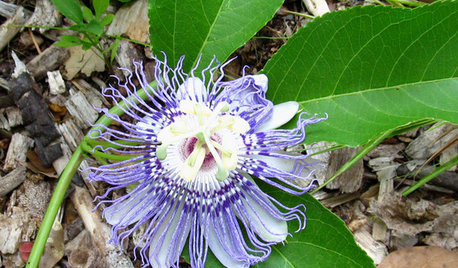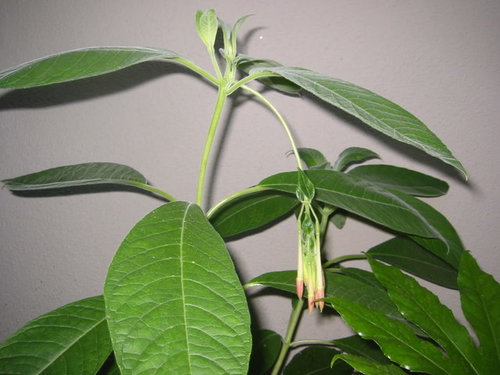OT: Non-Passiflora photos
mark4321_gw
13 years ago
Related Stories

GARDENING GUIDESGreat Design Plant: Passiflora Incarnata
Enjoy the amazing flowers and edible fruit of U.S. native Passiflora incarnata (also known as maypop) — the butterflies sure do
Full Story
DECORATING GUIDESDitch the Rules but Keep Some Tools
Be fearless, but follow some basic decorating strategies to achieve the best results
Full Story
DECKSDecking Materials Beyond Basic Lumber
Learn about softwoods, tropical hardwoods, composites and more for decks, including pros, cons and costs
Full Story
EARTH DAYGrow a Beautiful Garden With Ecofriendly Greywater
Reducing home water waste means lower bills and a healthier planet. Here's how to set up a greywater home irrigation system that can help
Full Story
LANDSCAPE DESIGNThe 7 Best Plant Types for Creating Privacy and How to Use Them
Follow these tips for using different kinds of plants as living privacy screens
Full Story
BATHROOM DESIGN18 Dream Items to Punch Up a Master-Bath Wish List
A designer shared features she'd love to include in her own bathroom remodel. Houzz readers responded with their top amenities. Take a look
Full Story
KITCHEN COUNTERTOPSKitchen Counters: High-Tech Solid Surfaces Make Maintenance Easy
Sculpted by heat and nonporous by nature, solid-surface countertops bring imagination and low maintenance to the kitchen
Full Story
BATHROOM DESIGNA Crash Course in Bathroom Faucet Finishes
Learn the pros and cons of 9 popular faucet finishes
Full Story
KITCHEN DESIGNIs a Kitchen Corner Sink Right for You?
We cover all the angles of the kitchen corner, from savvy storage to traffic issues, so you can make a smart decision about your sink
Full Story
LANDSCAPE DESIGN15 Great Ideas for a Lawn-Free Yard
End the turf war for good with hardscaping, native grasses and ground covers that save water and are easier to maintain
Full StorySponsored







eristal
karyn1
Related Professionals
Foothill Ranch Landscape Architects & Landscape Designers · Englewood Landscape Contractors · Euclid Landscape Contractors · Gurnee Landscape Contractors · Lemont Landscape Contractors · Newnan Landscape Contractors · Snoqualmie Landscape Contractors · South Lake Tahoe Landscape Contractors · Park Ridge Driveway Installation & Maintenance · Chatsworth General Contractors · Fredonia General Contractors · Highland City General Contractors · Longview General Contractors · Milton General Contractors · Sulphur General Contractorspassionflow
mark4321_gwOriginal Author
mark4321_gwOriginal Author
karyn1
pshawn
four (9B near 9A)
mark4321_gwOriginal Author
four (9B near 9A)
mark4321_gwOriginal Author